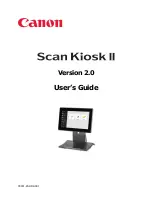
Scratch Pad
1x
Always Enabled
Memory
Mapped
Loopback
0052
Scratch Pad
8x
DTR Controlled
Any
Clocking
0051
Scratch Pad
8x
DTR Controlled
Any
Handshaking
0050
Scratch Pad
8x
RTS Controlled
Any
Clocking
0049
Scratch Pad
8x
RTS Controlled
Any
Handshaking
0048
Scratch Pad
8x
Auto Toggle
Any
Clocking
0047
Scratch Pad
8x
Auto Toggle
Any
Handshaking
0046
Scratch Pad
Normal
DTR Controlled
Any
Clocking
0045
Scratch Pad
Normal
DTR Controlled
Any
Handshaking
0044
Scratch Pad
Normal
RTS Controlled
Any
Clocking
0043
Scratch Pad
Normal
RTS Controlled
Any
Handshaking
0042
Scratch Pad
Normal
Auto Toggle
Any
Clocking
0041
Scratch Pad
Normal
Auto Toggle
Any
Handshaking
0040
Scratch Pad
8x
Always Enabled
Any
Clocking
0039
Scratch Pad
8x
Always Enabled
Any
Handshaking
0038
Scratch Pad
8x
DTR Controlled
Any
Loopback
0037
Scratch Pad
8x
RTS Controlled
Any
Loopback
0036
Scratch Pad
8x
Auto Toggle
Any
Loopback
0035
Scratch Pad
Normal
Always Enabled
Any
Clocking
0034
Scratch Pad
Normal
Always Enabled
Any
Handshaking
0033
Scratch Pad
Normal
DTR Controlled
Any
Loopback
0032
Scratch Pad
Normal
RTS Controlled
Any
Loopback
0031
Scratch Pad
Normal
Auto Toggle
Any
Loopback
0030
Scratch Pad
8x
Always Enabled
Any
Loopback
0029
Scratch Pad
Normal
Always Enabled
Any
Loopback
0028
ISR
8x
DTR Controlled
Any
Clocking
0027
ISR
8x
DTR Controlled
Any
Handshaking
0026
ISR
8x
RTS Controlled
Any
Clocking
0025
ISR
8x
RTS Controlled
Any
Handshaking
0024
ISR
8x
Auto Toggle
Any
Clocking
0023
ISR
8x
Auto Toggle
Any
Handshaking
0022
ISR
Normal
DTR Controlled
Any
Clocking
0021
ISR
Normal
DTR Controlled
Any
Handshaking
0020
* Indicates “COM” mode addressing. Addresses 3F8, 2F8, 3E8, and 2E8 are the standard addresses for
COM1, COM2, COM3, and COM4, respectively. Windows 95/98/ME enumerates any COM port at a
non-standard address starting with COM5.
** Handshaking indicates RTS routed to AUXOUT, AUXIN routed to CTS, and TCLK routed to RCLK.
Loopback indicates RTS routed to CTS, AUXIN routed to AUXOUT, and TCLK routed to RCLK.
Clocking indicates RTS routed to CTS, AUXIN routed to RCLK, and TCLK routed to AUXOUT.
*** Any indicates variable value; this value may or may not be user selectable depending on platform.
7. Select a
Basic Configuration
that displays "No conflicts" in the bottom display
region titled
Conflicting Device List
from the drop down list.
8. Windows 2000 should have chosen an available
Interrupt Request
setting
automatically when the I/O address range was configured by a Basic Configuration
selection. This default
Interrupt Request
setting should not need changed as long
4-13
SSP-200/300 (Rev. I and later) User's Manual
Summary of Contents for SSP-200
Page 6: ...This page intentionally left blank 2 1 SSP 200 300 Rev I and later User s Manual ...
Page 18: ...This page intentionally left blank 3 1 SSP 200 300 Rev I and later User s Manual ...
Page 24: ...This page intentionally left blank 4 1 SSP 200 300 Rev I and later User s Manual ...
Page 31: ...Windows 2000 4 8 ...
Page 33: ...Windows 2000 4 10 ...
Page 38: ...This page intentionally left blank 5 1 SSP 200 300 Rev I and later User s Manual ...
Page 48: ...This page intentionally left blank 7 1 SSP 200 300 Rev I and later User s Manual ...
Page 50: ...This page intentionally left blank 8 1 SSP 200 300 Rev I and later User s Manual ...
Page 52: ...SSP 200 300 User s Manual Revision 3 12 March 2004 P N 940 0075 312 Quatech Inc ...














































